Discover the Best Alternatives to the Overcrowded Hiking Trails in New Zealand’s North Island
The decision to limit the number of people on the famous one-day Tongariro Crossing (Tongariro Alpine Crossing) in New Zealand has been delayed. Many believe that the Department of Conservation should take action.
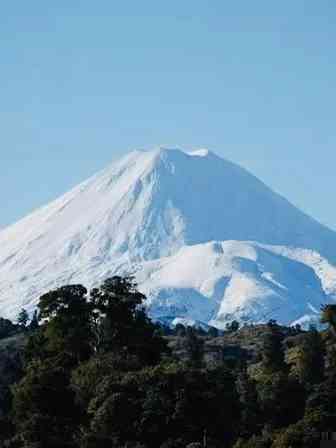
Alan wrote in 2018, “This was the worst hiking experience I’ve ever had.” “New Zealand has many great one-day hikes – but this is not one of them.” A recent photo posted by Instagram user Apui Pui showed long queues on the steps and bridges, with 40 people gathered at the lookout: “The number of people on Sunday was terrifying.”
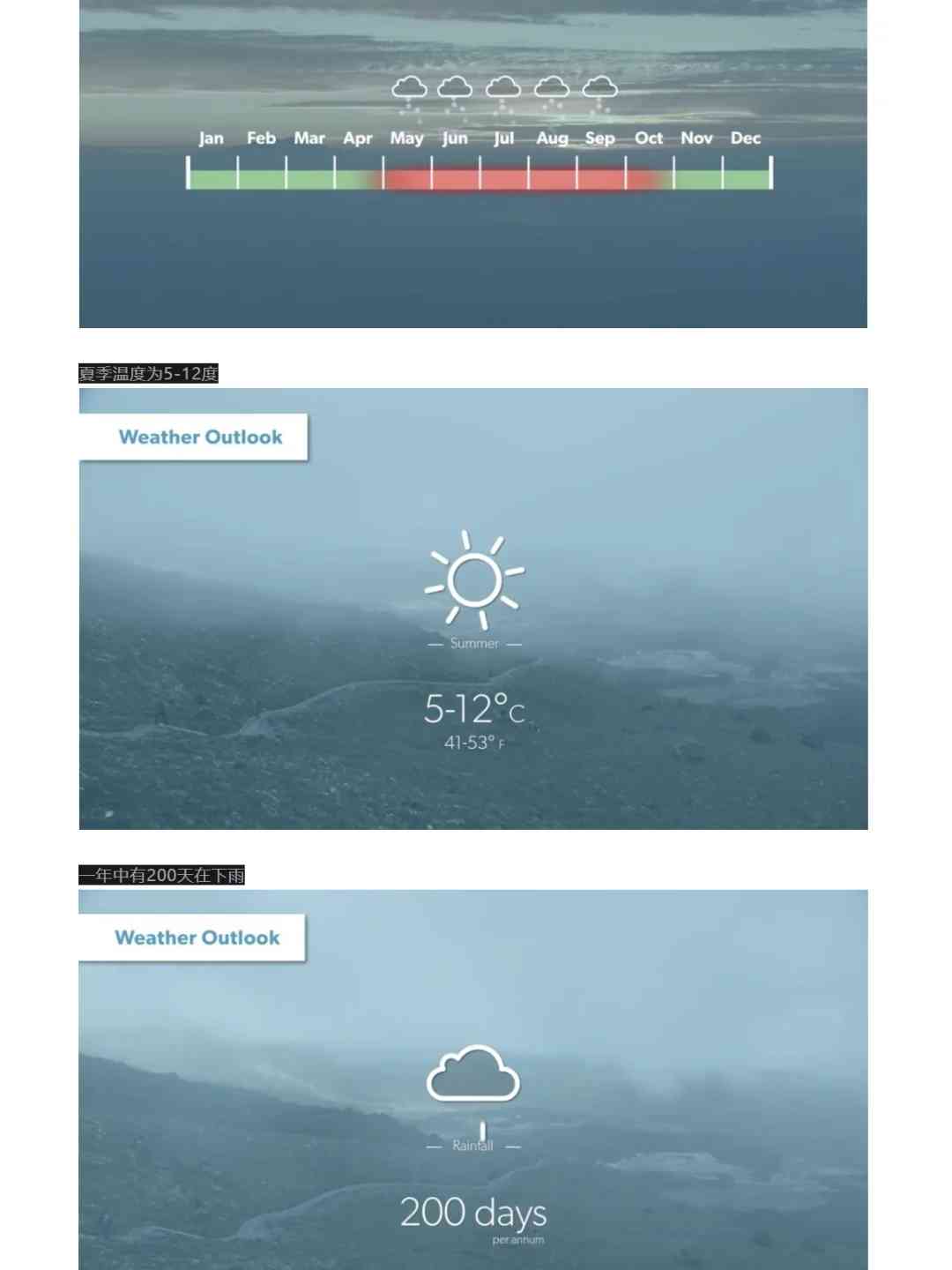
As early as 2006, the Tongariro National Park Plan pointed out that more and more people believed that the number of hikers on the Tongariro Alpine Crossing “was approaching or had already reached carrying capacity.”
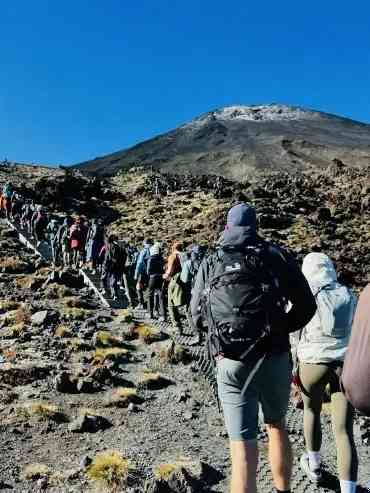
It was promised that the Department of Conservation would decide how many people could hike New Zealand’s most famous one-day trail, while minimizing environmental damage and protecting the visitor experience.
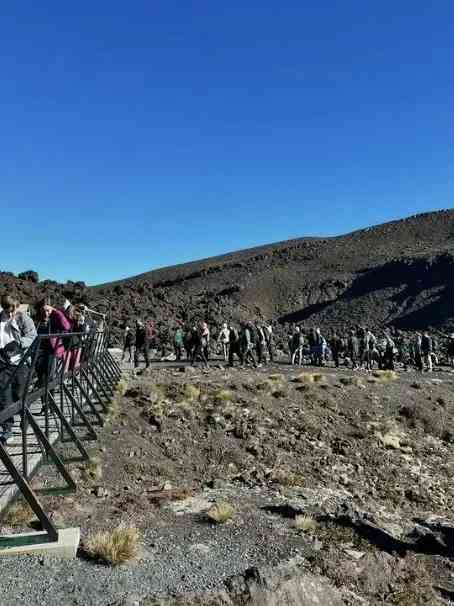
However, eighteen years later, there is still no clear answer.

In the summer of 2018/19, the Department of Conservation cleared human waste, mostly through expensive helicopter operations.
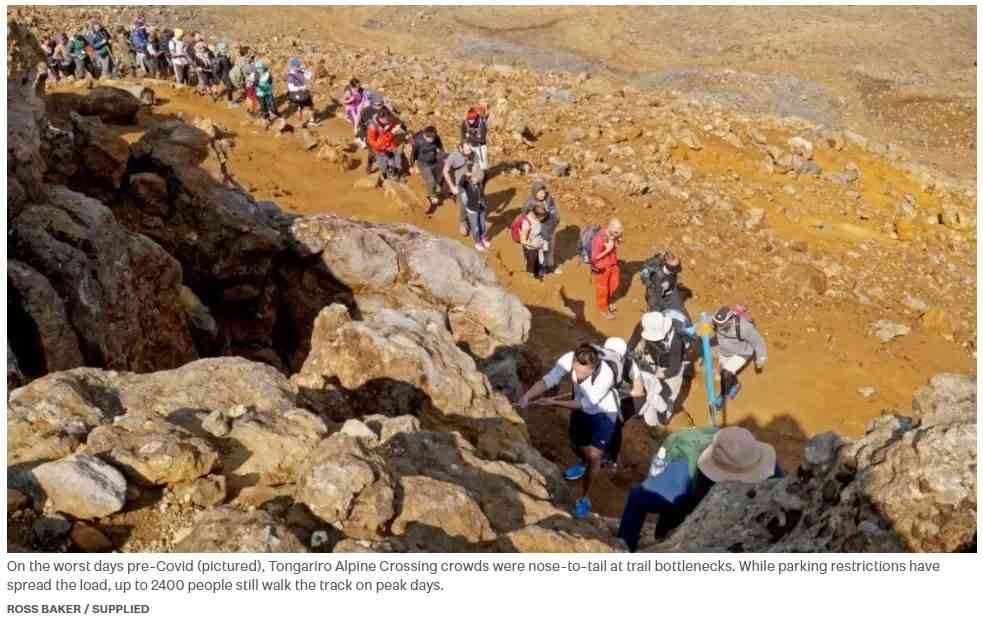
The number limits being considered are 600, 800, 1000, 1200, or 1500 people per day.
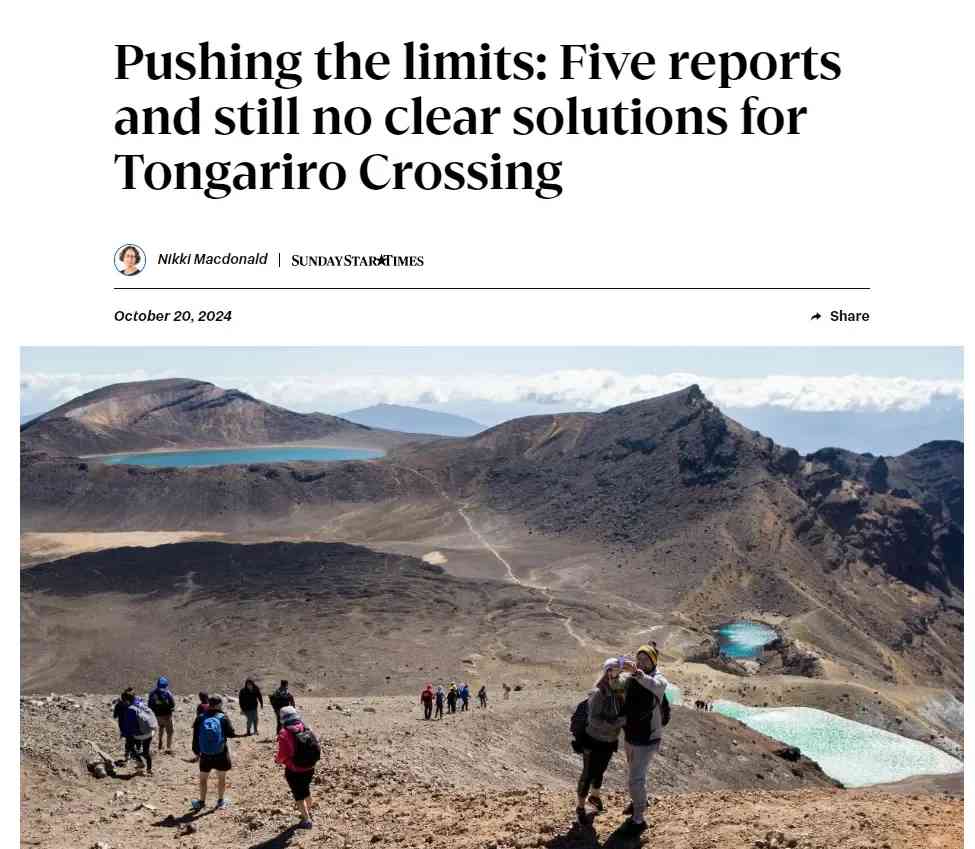
Although the number limits have been discussed for years, they have not yet been tried.
However, according to the law, the Department of Conservation cannot charge admission fees for nature reserves. This means that about a quarter of the hikers do not pay any fees.
About the Tongariro Crossing
This trail is one of the most famous one-day trails in New Zealand, offering visitors not only a challenging journey but also breathtaking volcanic landscapes. Nearly 150,000 people complete this trail each year.
But often, the simpler the route, the easier it is to be complacent.
It may seem simple, but it actually harbors dangers.
The climate changes too quickly, so it’s best not to go in winter.
Moreover, in many guides, the most beautiful time for the mountain crossing is after snowfall, which usually occurs between May and June. After the snow, the originally bare volcano turns into a perfectly conical snow-capped mountain. Many people find the charm and allure of the “Doomsday Snow Mountain” irresistible.
However, from late April to early October, it is more dangerous, especially with the addition of ice and snow. If you do not have experience in winter alpine hiking and cannot use an ice axe, it is recommended to give up or join a guided hiking trip.
In winter, when you look at the Doomsday Mountain, Tongariro, like many snow-capped mountains, is enchanting. It amazes you, but it can also lead you to misfortune. Many tourists have experienced hypothermia and come close to death here.
Follow me and never get lost. I will introduce you to various niche attractions and travel guides across New Zealand!
@SevenBro takes you around Middle-earth @NeighborCarRentalNZ


It’s frustrating to hear about overcrowding on such a beautiful trail. I completely agree that limiting the number of hikers could help preserve it. The alternatives mentioned in the article sound like great options for those looking for a less crowded experience. It’s good to have these lesser-known routes as a choice.